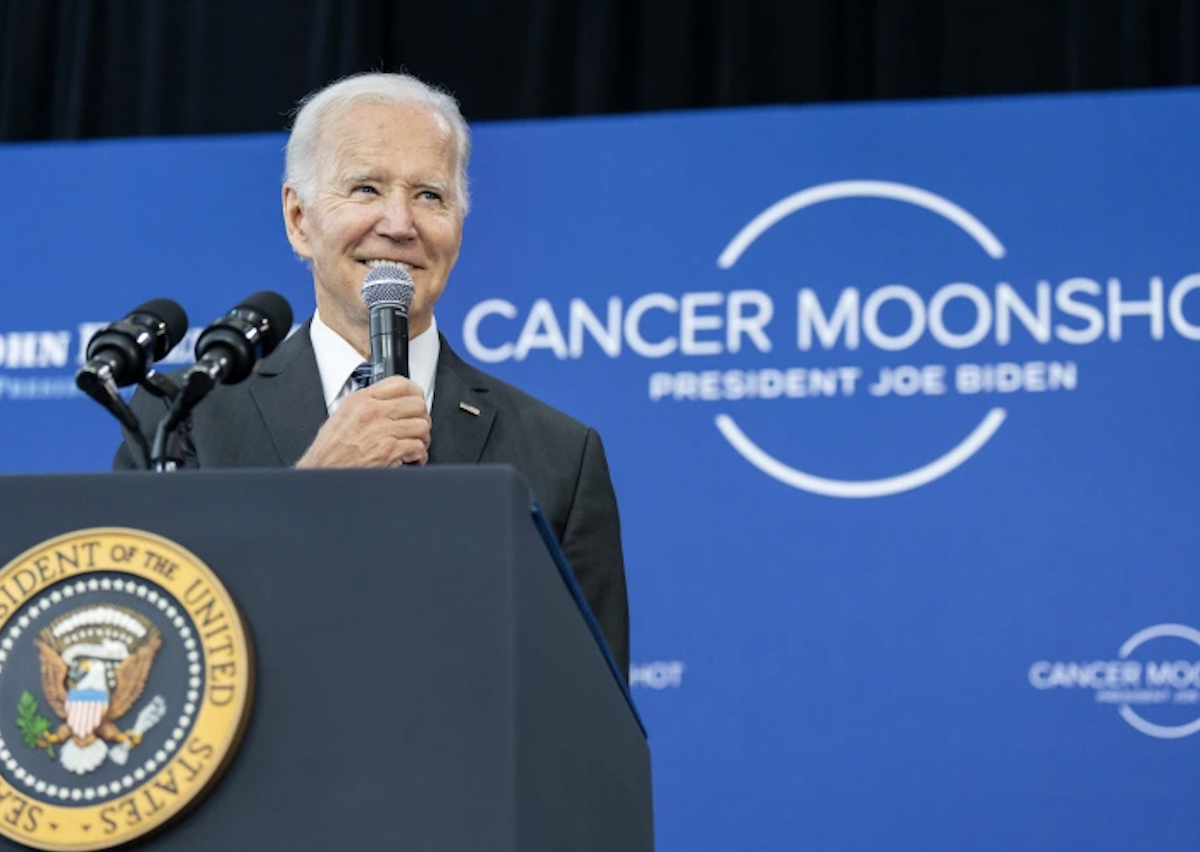Recently, the Biden administration announced “new actions and commitments” under its Cancer Moonshot initiative. Unfortunately, the list of plans reemphasizes a gaping government blind spot.
In the United States, about 20 percent of all cancer cases, and around 30 percent of cancer deaths, are attributed to smoking. Nothing in the Moonshot plan meaningfully addresses this. At its core, it’s hampered by a willful refusal to embrace lifesaving technological advances in nicotine delivery.
The latest “Fact Sheet” from the administration includes $15 million in grants from the Centers for Disease Control and Prevention (CDC) to “help increase adoption, implementation, and enforcement of policies prohibiting the sale of menthol and other flavored tobacco products.”
The Biden administration is ostensibly seeking to reduce tobacco-related harms while refusing to acknowledge the role of tobacco harm reduction.
The updated commitments also include a “new plan to decrease the impact of smoking on Americans’ health by expanding efforts to prevent smoking.” These smoking cessation efforts will have “a specific focus on communities disproportionately impacted by tobacco use,” including Indigenous and Black communities, and veterans.
The Biden administration is ostensibly seeking to reduce tobacco-related harms while refusing to acknowledge the role of tobacco harm reduction.
Negative headlines continue to obscure the reality that a range of novel products—including vapes, “heat-not-burn” technologies and forms of smokeless tobacco, such as snus—are far less harmful substitutes for cigarettes. They provide the nicotine that people who smoke want or need, without the high risk of disease and death.
In the case of vapes, years of research have produced no good evidence that they cause cancer in humans at all. On the other hand, there is compelling evidence that they increase people’s chances of quitting deadly cigarettes, compared with cold turkey or NRT.
How can a credible plan to help communities with high smoking rates ignore such a remarkable tool?
Other countries actively encourage adults who smoke to switch to vapes.
Many Americans know better than their government. Though youth vaping continues to dominate headlines, millions of adults use harm reduction products to quit smoking. In 2021, according to the CDC, 4.5 percent of US adults were “current e-cigarette users.”
Of these, 40.3 percent formerly smoked but had been able to quit. An additional 29.4 percent were currently smoking—likely to indicate that they were either smoking less thanks to vapes, and/or that they were taking a typical path toward quitting cigarettes entirely.
The Consumer Advocates for Smoke-Free Alternatives Association (CASAA) has compiled tens of thousands of testimonials from adults who have quit smoking with the aid of tobacco harm reduction products. Many of these individuals had previously tried quitting with nicotine gums or patches, but found vaping was the only thing that worked for them.
Other countries actively encourage adults who smoke to switch to vapes.
In the United Kingdom, the National Health Service supplies guidance for people looking to switch, noting that “thousands of people in the UK have already stopped smoking with the help of an e-cigarette. There’s evidence they can be effective.” The government plans to hand out free vape kits to 1 million people who smoke.
Meanwhile, the Canadian government clearly informs people that “switching completely to vaping nicotine is less harmful than continuing to smoke.” And the New Zealand Ministry of Health declares that vaping “is not harmless but … is much less harmful than smoking” and “can help some people quit smoking.”
Yet the millions who smoke in the US still routinely hear tobacco harm reduction products being demonized. And their access is consistently threatened as the US Food and Drug Administration (FDA) attempts to regulate an industry it has essentially pushed underground.
To date the FDA has only authorized 23 vaping products, all of which are only available in tobacco flavor. The FDA continues to use youth vaping as a reason to deny hundreds of millions of product applications, yet youth vaping has decreased, and the same survey data indicate flavors are not a top cited reason why youth use and continue to use vapes.
Biden’s Cancer Moonshot plan seeks to ban what’s shown to reduce use of menthol and other cigarettes.
Flavors are, however, of key importance to many adults who switch from cigarettes. Even adults who had smoked for years rely on flavors to remain smoke-free, as evidenced in videos of older folks who have quit long-term smoking with the help of flavored vapes.
Biden’s Cancer Moonshot plan aims to prohibit sales of menthol cigarettes—itself a deeply controversial move given enforcement fears for communities that disproportionately smoke menthols.
But it also—when “flavored tobacco products,” in federal nomenclature, includes vapes—seeks to ban what’s shown to reduce use of menthol and other cigarettes.
Rather than imposing even more draconian prohibitions, the Biden administration should implore the FDA to authorize sales of a wide range of vaping and other harm reduction products, including many flavored ones.
Without such steps, the Cancer Moonshot will be at best futile, at worst counterproductive, in addressing hundreds of thousands of annual smoking-related cancer deaths.
The late, esteemed tobacco researcher Michael Russell famously said, “People smoke for the nicotine but they die from the tar.” He said that in 1976. It is past time for the Biden administration to reconcile this truth with its policies.
Photograph via the White House





Show Comments